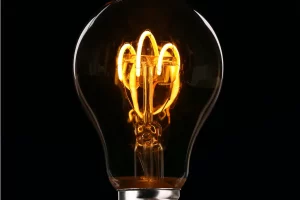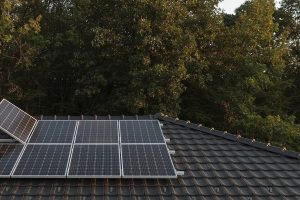Solar inverters are essential components that convert the direct current (DC) generated by solar panels into alternating current (AC) for use in homes and businesses. Among the various technologies used in solar inverters, Pulse Width Regulation (PWR) and Maximum Power Point Tracking (MPPT) stand out. This article explores these technologies, their benefits, differences, and alternatives, providing insights to help you choose the right solar inverter for your needs.

What is Pulse Width Regulation (PWR)?
Pulse Width Regulation (PWR) is a control technique used in solar inverters to manage the power output from photovoltaic (PV) panels. PWR adjusts the width of pulses in a pulse-width modulated signal to regulate the average power delivered to the load or battery. By varying the pulse width, the inverter can control the power output, ensuring optimal performance and protecting the system from overloading or underutilization.
Benefits of PWR:
- Enhanced Efficiency: PWR improves overall system efficiency by optimizing power delivery and reducing energy losses.
- Stable Power Output: The regulated power output is more stable, benefiting sensitive electronic devices.
- System Protection: PWR protects the solar system from power fluctuations, reducing the risk of damage to components.
- Cost-Effective: PWR technology can be more affordable compared to more complex systems, offering a balance between cost and performance.
What is Maximum Power Point Tracking (MPPT)?
Maximum Power Point Tracking (MPPT) is a sophisticated technology used in solar inverters to maximize the power output from solar panels. MPPT continuously adjusts the electrical operating point of the panels to ensure they operate at their Maximum Power Point (MPP), where they produce the most power under varying environmental conditions.
Benefits of MPPT:
- Superior Efficiency: MPPT increases the efficiency of a solar system, often by 20-30%, by ensuring panels operate at their optimal power point.
- Dynamic Adaptability: MPPT systems excel in environments with fluctuating conditions such as shading, varying sunlight, and temperature changes.
- Maximized Energy Harvest: MPPT ensures the highest possible energy yield from the solar panels, maximizing return on investment.
Alternatives to PWR and MPPT
Apart from PWR and MPPT, there are other control technologies and methods used in solar inverters, each with unique advantages and applications.
Fixed Voltage Inverters
Fixed voltage inverters operate at a predetermined voltage level without dynamic adjustment. These inverters are simpler and cheaper but less efficient than PWR and MPPT technologies.
Benefits of Fixed Voltage Inverters:
- Simplicity: Easier to design and maintain due to their straightforward operation.
- Cost-Effective for Small Systems: Suitable for smaller systems where cost is a significant factor and efficiency is less critical.
Hybrid Inverters
Hybrid inverters combine features of MPPT and other technologies, often integrating battery storage capabilities. They can manage both solar power generation and energy storage, providing a more comprehensive energy management solution.
Benefits of Hybrid Inverters:
- Versatility: Capable of handling both solar power generation and battery storage, making them suitable for grid-tied and off-grid systems.
- Energy Independence: Allows for energy storage, providing power during outages or at night.
- Efficiency: Often include MPPT technology, ensuring high efficiency in power management.
Differences Between PWR, MPPT, and Other Alternatives
Efficiency and Performance
MPPT offers the highest efficiency and performance, particularly in variable environmental conditions. Ensures maximum power extraction from solar panels.
PWR provides improved efficiency and stable power output compared to fixed voltage inverters but is generally less efficient than MPPT.
Fixed Voltage Inverters are least efficient, suitable for simpler and smaller systems where budget constraints are significant.
Hybrid Inverters – high efficiency with the added benefit of energy storage capabilities, combining the advantages of MPPT and battery management.
Complexity and Cost
MPPT: More complex and expensive due to advanced algorithms and dynamic adjustments required to track the maximum power point.
PWR: Less complex and more affordable than MPPT, offering a good balance for medium-sized systems.
Fixed Voltage Inverters: Simplest and cheapest, ideal for basic solar installations with lower performance requirements.
Hybrid Inverters: Most complex and expensive, but offer comprehensive energy management solutions including storage.
Choosing the Right Solar Inverter
Selecting the appropriate solar inverter depends on various factors, including your energy needs, budget, and environmental conditions.
- System Size and Budget: For large-scale installations where maximizing energy harvest is crucial, MPPT inverters are ideal despite their higher cost. For smaller systems or those with budget constraints, PWR inverters offer a good balance between cost and performance. Fixed voltage inverters are suitable for very basic and small systems.
- Environmental Conditions: In environments with highly variable sunlight and temperature conditions, MPPT inverters provide superior performance. PWR inverters perform well in moderately variable conditions, while fixed voltage inverters are best in stable conditions.
- Energy Requirements: Assess your energy consumption patterns. If your energy needs are high and consistent, the enhanced efficiency of MPPT inverters will provide better value. For less demanding applications, PWR inverters offer adequate performance, and fixed voltage inverters can suffice for minimal requirements.
- Application Type: Consider the sensitivity of the equipment being powered. If stable and high-quality power is essential, both MPPT and PWR inverters are suitable, with MPPT offering the best performance. Hybrid inverters are ideal if you need energy storage capabilities for backup power.
- Future Expansion: If you plan to expand your solar installation in the future, MPPT and hybrid inverters are more adaptable and can handle additional panels without sacrificing efficiency.
Conclusion
PWR and MPPT offer significant benefits over traditional fixed voltage inverters, each catering to different needs and conditions. MPPT provides superior efficiency and adaptability, making it ideal for maximizing energy harvest in diverse environments. PWR offers a cost-effective alternative with enhanced efficiency and stable power output. Fixed voltage inverters are best suited for small, budget-conscious applications. Hybrid inverters, combining MPPT with energy storage, provide a comprehensive solution for both power generation and backup needs. By considering your specific requirements and conditions, you can make an informed decision and select the right solar inverter to maximize the benefits of your solar energy system.



